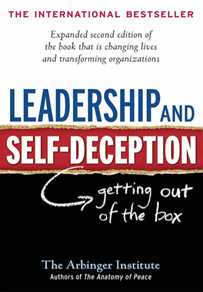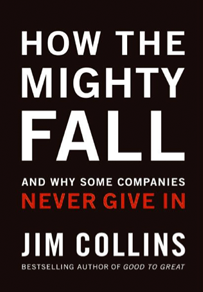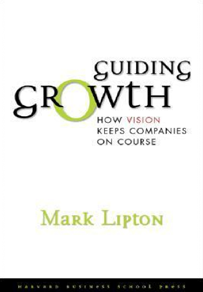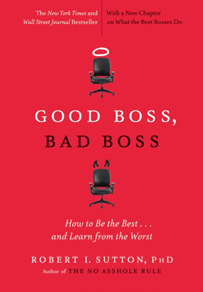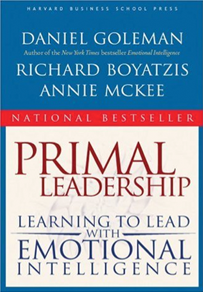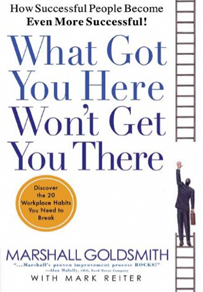Suggested Reading
Browse by Subject
-
Leadership and Self-Deception
Getting Out of the Box
by The Arbinger Institute
Organizational problems are almost always people problems. Despite continuous efforts to find solutions, organizations seem to still exhibit symptoms fed by blame, lack of accountability, complacency and motivation. “Leadership and Self-Deception” is based on the key insight that most problems facing organizations and individuals are nearly always symptoms of a deeper problem, known as self-deception. Self-Deception is not well understood, yet reduces the effectiveness of every individual, leader and employee. Whether your organization is very successful or in major need of a turn around, or you as an individual are trying to make personal changes, self-deception will reduce your ability to get the results you want. The authors write that self-deception actually “determines one’s experience in every aspect of life.” The extent to which it does that, and in particular the extent to which it is the central issue in leadership, is the subject of “Leadership and Self-Deception.” This book has profound personal and professional implications for managers at all levels of an organization.
-
How The Mighty Fall
And Why Some Companies Never Give In
by James Collins
“How the Mighty Fall” is a look into top companies that had it all—a strong brand, global recognition and a seemingly immoveable presence in the market. They had it, and then they lost it. Decline, Jim Collins argues, is largely self-inflicted, and the path to recovery lies largely within our own hands. Collins’ research uncovered five step-wise stages of decline: Stage 1: Hubris Born of Success, Stage 2: Undisciplined Pursuit of More, Stage 3: Denial of Risk and Peril, Stage 4: Grasping for Salvation, and Stage 5: Capitulation to Irrelevance or Death. By understanding these stages of decline, Collins contends that leaders can substantially reduce their chances of falling all the way to the bottom. Collins presents a framework designed to help business leaders and companies identify the “silent creep of impending doom” and quickly set a correction course. “How the Mighty Fall” is an in-depth look at the decline of some of our nation’s greatest companies and offers leaders insight into how to stave off decline and, if they find themselves falling, reverse their course.
-
Authentic Leadership
Rediscovering the Secrets to Creating Lasting Value
by Bill George
In “Authentic Leadership,” Bill George makes the case for a new type of leadership, authentic leadership, where people of the highest integrity are committed to building enduring organizations. George describes authentic leadership as a leadership style that is consistent with a leader’s personality and core values, and that is honest, ethical and practical. George suggests that to begin developing your authentic leadership style, you should begin by assessing yourself against the five dimensions of an authentic leader: understanding your purpose, practicing your values, leading with your heart, establishing connected relationships and demonstrating self-discipline. George argues that authentic leaders are dedicated to continued personal growth and committed to building lasting relationships and strong organizations. “Authentic Leadership” is a worthwhile guide for character-based leaders and all those who have a stake in the integrity and success of any business.
-
Power
Why Some People Have It—And Others Don’t
by Jeffrey Pfeffer
Jeffrey Pfeffer suggests that talent, intelligence, performance, and likeability alone are not the key to moving up in an organization; instead, he argues political skill, self promotion, building relationships, cultivating a reputation for control and authority, and perfecting a powerful demeanor are vital drivers of advancement and success. Case studies feature the careers of leaders like G.E. CEO Jack Welch, General George Patton, Time CEO and Chairman Ann Moore, Lt. Colonel Oliver North, and President Bill Clinton. Filled with frank, practical insights, and even contrarian advice, “Power” offers unexpected—and aggressive—directions on how to advance and flourish in an ever-more competitive work world. This book has a realpolitik analysis of human behavior that isn’t for everyone but its candor and straightforwardness offers insights into how power is successfully built, maintained, and employed in organizations. Reading “Power” may make you uncomfortable, but it will provide an understanding of the political dynamics at play in organizations small and large.
-
Hope Is Not a Method
What Business Leaders Can Learn From America’s Army
by Gordon Sullivan and Michael Harper
Since the end of the Cold War, the United States Army has been reengineered and downsized more thoroughly than any other business. In the early 1990s, General Sullivan, army chief of staff, and Colonel Harper, his key strategic planner, took the post-Cold War army into the Information Age. Faced with a 40 percent reduction in staff and funding, they focused on new peacetime missions, dismantled a cumbersome bureaucracy, reinvented procedures, and set the guidelines for achieving a vast array of new goals. “Hope Is Not a Method” explains how this process took place and shows how the Army’s experiences are relevant to businesses. From how to stay on top of long-range issues to how to maintain a productive work force during times of change, it offers invaluable lessons in leadership and provides proven tactics any business can implement.
-
Guiding Growth
How Vision Keeps Companies on Course
by Mark Lipton
“Guiding Growth” argues that vision matters more than strategy in achieving sustained success. Yet few executives understand what vision is and the role it plays in guiding forces for day-to-day behavior and overall company direction. Organizational expert Mark Lipton believes that vision has more importance than leaders think and that it is an essential factor in building scalable organizations that achieve long-term success. Based on extensive research and real-world consulting work with executives implementing the scaling process, “Guiding Growth” provides fresh examples of established and new firms that have developed powerful growth visions. Moving beyond empty ‘mission statements’, Lipton outlines a step-by-step process for establishing an actionable vision, presenting it to the company, and embedding it into the organizational fabric.
-
Why Smart Executives Fail
And What You Can Learn from Their Mistakes
by Sydney Finkelstein
“Why Smart Executives Fail,” Sydney Finkelstein, explores corporate mistakes—what they are, why they occur, and what managers, leaders, and investors can do about them. All too often, once successful companies lose their luster and begin to stumble. This has happened at top companies like GM, Motorola, Quaker, and Sony, all of which have very smart, hard-working senior executives. How can you tell if it’s about to happen at your own company? In “Why Smart Executives Fail,” Finkelstein lays out the common causes behind failures in wildly different types of companies. He explains the seven habits of spectacularly unsuccessful people that drive smart managers to make catastrophic mistakes. As much about psychology as it is about business, “Why Smart Executives Fail” tells the stories of more than fifty great business disasters and includes interviews with many of their leaders, in which they explain what really led to their disastrous decisions.
-
Good Boss, Bad Boss
How to Be the Best—and Learn from the Worst
by Robert Sutton
In “Good Boss, Bad Boss,” Bob Sutton takes a common sense approach on what really differentiates the great bosses from the ones who are just good, so-so, or even worse. The main theme that runs throughout the book—which brings together the diverse lessons and is a symbol of great bosses: “They work doggedly to “stay in tune” with how their followers (and superiors, peers, and customers) react to what they say and do.” The best bosses are intensely aware that their success depends on having the self-awareness to control their moods and actions, to accurately interpret their impact on others, and to make adjustments on the go that continuously ignite effort, dignity, and pride among their people. Bob Sutton’s has written some great books, but this is the one to start with.
-
Primal Leadership
Learning to Lead with Emotional Intelligence
by Daniel Goleman, Richard Boyatzis, and Annie McKee
Great leaders move us. They ignite our passion and inspire the best in us. When we try to explain why they are so effective, we speak of strategy, vision, or powerful ideas. But the reality is much more primal: Great leadership works through the emotions. Drawing from decades of research within world-class organizations, the authors of “Primal Leadership” show that great leaders—whether CEOs or managers, coaches or politicians—excel not just through skill and ability, but by connecting with others using Emotional Intelligence competencies like empathy and self-awareness. No matter what leaders set out to do—whether it’s creating strategy or moving teams to action—their success depends on how they do it. The best leaders, the authors argue, have “resonance”—a powerful ability to drive emotions in a positive direction to get results—and can seamlessly interchange among a variety of leadership styles as the situation demands.
-
What Got You Here Won’t Get You There
How Successful People Become Even More Successful
by Marshal Goldsmith and Mark Reiter
Successful people are the hardest to convince that they need to change because they are already successful. The corporate world is filled with executives, men and women who are intelligent, skilled, and driven. But only a handful of them will ever reach their full potential. In “What Got You Here Won’t Get You There,” Marshall Goldsmith discusses the key beliefs of successful leaders and also the behaviors that hold them back. He addresses the fundamental problems that come with success and the twenty habits that prevent people from achieving greater levels of success. Goldsmith shares his years of experience in helping top executives change their behavior and improve their interpersonal skills. In “What Got You Here Won’t Get You There,” you’ll learn about the dangers of “winning too much”, adding too much value, refusing to share information, and taking too much credit for results. Using Goldsmith’s straightforward, jargon free advice, anyone will benefit from this book, whether new manager or a rising senior executive.


